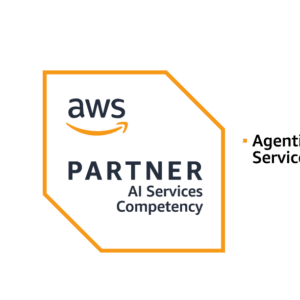
How an advanced solution improved data management in a fintech company
The fintech industry is experiencing unprecedented growth, transforming how individuals and companies manage their finances. From digital wallets to contactless payment systems, technological innovation is driving new ways to operate in the financial market. However, this rapid growth also brings significant challenges—among them, the efficient management of large volumes of information and the constant need to adapt to new technologies and regulations.
Faced with this need, a leading fintech company specializing in digital accounts and credit card solutions sought to modernize its internal data search and management process. The goal: to optimize decision-making and improve operational efficiency in a dynamic and competitive environment.
The Challenge
As the company expanded its operations, it faced an increasing volume of scattered and hard-to-query data. Searching for relevant information was slow and inefficient, impacting internal productivity and response capabilities. A system was needed that could deliver accurate, contextual answers in real time, reduce search times, and enable access to strategic data.
The Solution
The proposed approach was based on implementing a Retrieval-Augmented Generation (RAG) architecture, combining natural language processing and advanced artificial intelligence. The project involved three fundamental components:
- Data cleaning and storage: Data was organized and stored in a vector database, enabling semantic relationships between them.
- Information retrieval: A system capable of extracting relevant data quickly and accurately.
- Answer generation: Generation of coherent, contextual responses based on the retrieved information.
The development included the use of Amazon SageMaker for generating embeddings, allowing internal teams to autonomously update and manage this data. Additionally, a user-friendly interface was built via a Slack-integrated chatbot, facilitating information searches within the organization.
The entire system was developed before more accessible alternatives such as Amazon Bedrock or GPT-4 were available, requiring a robust and customized approach at every stage of the project.
The Technology Infrastructure
To bring this solution to life, the AWS ecosystem was used, integrating services such as:
- Lambda and API Gateway for process orchestration
- SageMaker for training and managing embeddings
- Vector databases for semantic data storage
- Slack as the user interface platform
Automatic workflows were also designed using AWS Step Functions, allowing for continuous data updates and improved operational efficiency.
The Results
Implementing the RAG architecture delivered significant improvements:
- 40% reduction in decision-making time: Relevant data could be accessed more quickly, enabling faster response to market changes and customer needs.
- 35% less time spent searching for information: Thanks to the chatbot, employees easily accessed the information they needed, increasing overall productivity.
- 25% improvement in data accuracy: The embedding system enabled more relevant and reliable data management, strengthening the quality of financial products and services.
These improvements directly impacted key business KPIs, streamlining internal processes and enhancing customer satisfaction.
A Promising Future
The solution not only addressed immediate data management challenges but also set a new standard for how fintech companies can manage growing volumes of internal information. This implementation demonstrates how combining technological innovation with a strategic approach can drive meaningful improvements in organizational efficiency.
The future holds even more potential as cutting-edge technologies continue to be integrated, solidifying digital transformation in the financial sector.
















